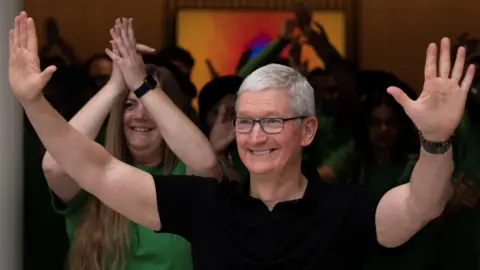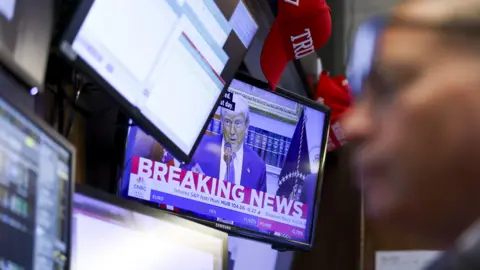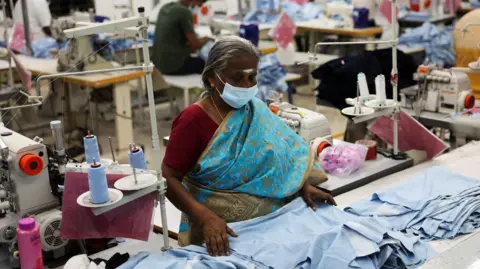
Will the US-China agreement stymie India’s plans to build factories?
 Reuters
Reuters
Apple is shifting most of its production of iPhones headed to the US from China to India
Just as India showed flickers of progress toward its long-held dream of becoming the world’s factory, Washington and Beijing announced a trade “reset” that could derail Delhi’s ambitions to replace China as the global manufacturing hub.
Last week, Trump’s tariffs on China dropped overnight – from 145% to 30%, vs 27% for India – as the two sides thrashed out an agreement in Switzerland.
As a result, there’s a chance manufacturing investment that was moving from China to India could either “stall” or “head back”, feels Ajay Srivastava of the Delhi-based think tank, Global Trade Research Institute (GTRI). “India’s low cost assembly lines might survive, but the value-added is at risk. “
The change in sentiment stands in sharp relief to the exuberance in Delhi last month when Apple indicated that it was shifting most of its production of iPhones headed to the US from China to India.
That may well still happen, even though US President Donald Trump revealed that he had told Apple CEO Tim Cook not to build in India because it was “one of the highest tariff nations in the world”.
“India is well positioned to be an alternative to China as a supplier of goods to the US in the immediate term,” Shilan Shah, an economist with Capital Economics, wrote in an investor note before the deal was announced. According to Shilan Shah, an economist with Capital Economics, 40% of India’s goods exported to the US are “similar” to those New export orders surged to a 14-year high, according to a recent survey of Indian manufacturers.
Nomura, a Japanese broking house, also pointed to growing “anecdotal evidence” of India emerging as a winner from “trade diversion and supply-chain shift in low and mid-tech manufacturing” particularly in sectors like electronics, textiles and toys.
EPA
The US and China agreed to lower import taxes on goods being traded between the two countries

For one, there’s greater willingness by Narendra Modi’s government to open its doors to foreign companies after years of protectionist policies, which could provide tailwind.
India and the US are also negotiating a trade deal that could put Asia’s third-largest economy in a sweet spot to benefit from the so-called “China exodus” – as global firms shift operations to diversify supply chains.
India has just signed a trade pact with the UK, sharply cutting duties in protected sectors like whiskey and automobiles. This is a hint at what Delhi may offer Trump during the ongoing India-US negotiations.
“Hence, for India to capitalise on this opportunity, it needs to complement any tariff arbitrage with serious ease-of-doing-business reforms. The Modi government has made some efforts to boost this number, but they have had limited success.
Reuters
India’s attempts to expand manufacturing have seen limited success.
Reuters
India’s attempts to expand manufacturing has seen limited success.
Another major concern, says Nomura, is India’s ongoing reliance on China for raw materials and components used in electronics like iPhones, limiting Delhi’s ability to fully capitalise on supply chain shifts.
“India’s earnings from making iPhones will only rise if more of the phone is made locally,” Mr Srivastava told the BBC.
According to him, right now Apple earns over $450 per iPhone sold in the US while India keeps less than $25 – even though the full $1,000 is counted as an Indian export.

But experts caution, this could further curtail India’s ability to build local know-how and grow its own industrial base.
All of this shows that beyond the headline-grabbing announcements by the likes of Apple, India is still a long way from realising its factory ambitions.
“Slash production costs, fix logistics, and build regulatory certainty,” Mr Srivastava urged policymakers in a social media post. In a social media post, Mr Srivastava urged policymakers to “slash production costs, fix logistics and build regulatory This US-China reset aims to repair damage, and not provide a lasting solution. India must play the game long-term, or else risk being sidelined. Follow BBC News India on Instagram and Twitter.

